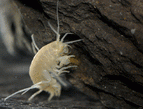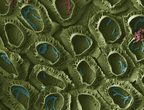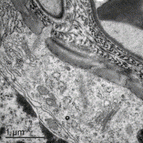Contract number
P1-0184
Department:
Department of Biology
Type of project
Research Programmes/Infrastructural Centres
Type of project
Research Programme
Role
Lead
Financing
Duration
01.01.2020 - 31.12.2025
ARRS FTE value
3.59 FTE
Total
3.59 FTE
Project manager at BF
Fišer CeneIn the programme 'Integrative zoology and speleobiology' led by prof. dr. Jasna Štrus, the integrative approach is applied to explain the key functional and evolutionary mechanisms of surface and subterranean animals in the Dinaric karst. Outstanding biodiversity of the area enables focused research of evolutionary and ecological processes, at the same time representing invaluable natural heritage that deserves sustainable management and protection. Since the effective nature conservation and understanding of biological processes, both require a holistic approach, the program is integrating knowledge across different levels of biological organization, from the communities, species and populations, to organisms, tissues and cells. Research within the programme aims to elucidate some current evolutionary and ecological issues (e.g. speciation, specialization, origin of communities), provide an adequate understanding of population status of the keystone species, as well as basic insights into human impacts on fauna (land use, pollutants). This knowledge will represent the basis for the effective protection and conservation management, of the Dinaric ecosystems and their fauna.
Knowledge of organisms is of great importance for science and society as the rate and extent of global change increase. Integration of knowledge about organisms is important for explaining results from cellular, molecular and genomic studies, for understanding interactions between living beings and environment, for human well-being, for the expansion of technologies and design of biomimetic materials.
External link to SICRIS link Open in new window
The research programme is focused to:
- biodiversity, distribution, species composition and phylogenetic relationships of the selected taxa (spiders, centipedes, crustaceans, butterflies), aiming to explain the patterns and causes for the observed Dinaric and local hotspot diversity and assess threats to populations of keystone species (large carnivores, butterflies, bats).
- processes and adaptations that create and maintain the unique Dinaric fauna. These are studied on the basis of genetic diversity, the role of symbiotic bacteria, morphology, and behavior of selected taxa (cave crustaceans, large carnivores, bees).
- structural and functional features of model subterranean and surface organisms (crustaceans, amphibians) at tissue and ultrastructural levels, reflecting adaptations to specific environments. To better understand the mechanisms and role of biomineralizations in living systems, calcified chitinous matrices secreted by epithelia during molting, embryonic development and interactions with microorganisms are investigated in crustaceans. Results on structural and functional studies of animal organic matrices and biominerals can be used in designing new biomimetic materials.
- effects of pollution on selected animal species (crustaceans, proteus, bee) in surface and subterranean ecosystems.
- the impact of land use on ecosystem functioning and on population genetics of the selected species.
Most important research achievements in the last period are:
- Analyses of European subterranean fauna, which showed that Dinaric karst is a global hotspot of subterranean fauna, even when morphologically crpytic species were taken into account (Eme, Zagmajster et al, 2018). The list of species is not complete. New species are still being discovered annualy (Polak et al. 2017), whereas taxonomic research of cryptic species has just begun (Delić et al, 2017). Interspecific interactions, driving in competitive exclusion (Fišer et al, 2015), and ecological differentiation (Delić et al, 2016), likely contributed to species richness of the region. We a're developing guidelines for scientifically supported conservation and management of Dinaric ecosystems and their faun, mostly large carnivores and butterflies.
- the effects of anthropogenic impact (pollution and salinization ) on organisms (Jemec et al ,2016, Skarkova et al, 2016, Madzaric et al, 2018, Kos et al, 2017). One of the most important findings is that nanomaterials in general are not as hazardous as some conventional chemicals previously investigated.
- new aspects on the origin of homomorphic sex chromosomes in proteus (Sessions et al, 2017) and variability of its sex organs (Bizjak-Mali, 2017). Both papers represent an important contribution towards better understanding of the reproductive biology of proteus, which might play an important role in conservation of this endangered underground amphibian.
- Interactions between invertebrates and microorgansims in digestive system, calcium bodies (Kostanjšek et al, 2017, Vittori et al, 2017) and body surface (Štrus et al, 2017) with focus to organic matrices, secreted by different epithelia and formation of biomineralized structures. Synthesis and reconstruction of mineralized animal matrices during embryonic development and molting is investigated with microscopy and analytical approaches. Knowledge on exoskeletal and gut cuticle morphogenesis during embryonic and postembryonic development in crustaceans is presented in review paper (Mrak et al, 2017)
- Through analysis of dispersion data of Dinaric wolves we emphasized the importance of wolf monitoring in Slovenia. Together with other European researchers we reviewed 10 years of wolf genetic research in Europe and highlighted the importance of methodological harmonization (Hindrikson et al, 2016).






